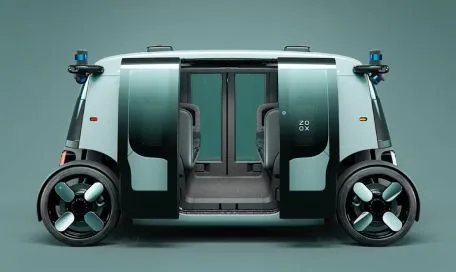Zoox’s trips are free and the initial area of operation is limited to around the Strip. Its cars are purpose-made robotaxis (pictured) unlike the adapted general purpose cars used by Waymo and Tesla.

Zoox’s robotaxi has no driver controls. The vehicles have four inward-facing seats and are capable of bidirectional travel so which end is front and which is back is interchangable.
China has robotaxis operating in seven cities with Baidu, Pony.ai and WeRide providing most of the rides, The leading US robotaxi provider, Waymo, operates in four cities – San Francisco, LA, Phoenix and Austin – but is running at about the same level of robotaxi rides as China’s leading robotaxi company Baidu.
Waymo’s 1500 robotaxis have provided 10 million rides and are running at 250,000 rides a week; Baidu has around 1,000 robotaxis which provided over 1.4 million rides in Q1. Waymo intends to increase its robotaxi fleet to 3,500 by 2026WeRide has 400 robotaxis and Pony.ai has 300 robotaxis with plans to have 1,000 by the end of this year and 2,000-3,000 by the end of 2026.
Goldman Sachs reckons that there will be around 500,000 robotaxis operating across more than 10 cities in China by 2030 with a potential revenue of $47 billion by 2035, up from $54 million in 2025. It is forecasting 90% CAGR 2025-30 for robotaxis in the US to pull in revenues of $7 billion by 2030
